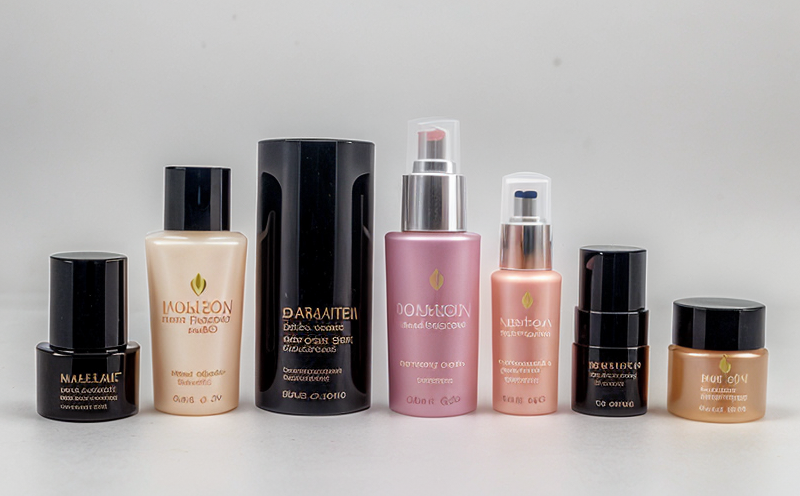Stainless Steel Interaction Testing in Cosmetic Containers
In the realm of cosmetics testing, ensuring product safety and quality is paramount. One critical aspect that often goes unnoticed but can have significant implications on consumer health is stainless steel interaction testing in cosmetic containers. This process ensures that the materials used in container construction do not leach harmful substances into the cosmetic products they contain. The following sections will delve into why this testing matters, how it is conducted, its environmental and sustainability contributions, and some frequently asked questions.
The choice of stainless steel for cosmetic containers is influenced by its durability, resistance to corrosion, and aesthetic appeal. However, even high-quality materials can interact with the products they contain if not properly tested. The interaction between stainless steel and various cosmetic ingredients can lead to metal ion release, which may cause irritation or other adverse reactions when used on the skin.
Testing for such interactions is crucial before a product reaches market shelves. Regulatory bodies like the US Food and Drug Administration (FDA) and the European Union's Cosmetics Regulation require that all materials in contact with cosmetics are safe under normal conditions of use and intended storage. Stainless steel interaction testing helps manufacturers comply with these regulations, ensuring consumer safety.
The process involves exposing samples of stainless steel to various cosmetic ingredients under controlled conditions. The test parameters include pH levels, ionic strength, temperature, and duration of exposure. Specimens are then analyzed for metal ion release using spectrophotometric methods or inductively coupled plasma mass spectrometry (ICP-MS).
Why It Matters
The importance of stainless steel interaction testing cannot be overstated, especially given the increasing trend towards natural and organic products. Many consumers prefer these alternatives because they are perceived as safer and more environmentally friendly. However, even natural ingredients can interact with metal containers, leading to potential contamination issues.
- Consumer Health: Ensures that no harmful metals leach into cosmetic products, thereby protecting consumer health.
- Regulatory Compliance: Helps manufacturers comply with international regulations and standards.
- Brand Reputation: Builds trust by demonstrating a commitment to product safety and quality.
- Sustainability: By ensuring safe and compliant products, it contributes positively to the environment.
The consequences of not conducting such tests can be severe. Non-compliance with regulations could result in product recalls, legal action, and damage to brand reputation. Moreover, unsafe products can lead to health issues for consumers, potentially causing lawsuits and negative publicity.
Scope and Methodology
| Parameter | Description |
|---|---|
| Materials Tested | Inert metals such as stainless steel, nickel, and copper. |
| Test Ingredients | Cosmetic ingredients like water, emulsifiers, preservatives, fragrances, pigments, and surfactants. |
| Environmental Conditions | PH levels, ionic strength, temperature (room temperature to 50°C), duration of exposure (1 day up to 90 days). |
| Analytical Techniques | Spectrophotometric methods and Inductively Coupled Plasma Mass Spectrometry (ICP-MS). |
The testing process begins by selecting appropriate stainless steel samples. These are then exposed to various cosmetic ingredients under controlled environmental conditions. The duration of exposure can vary, depending on the type of product and expected shelf life.
After the exposure period, the specimens are analyzed using ICP-MS or spectrophotometric methods to measure any metal ions released into the cosmetic formulation. Any levels exceeding safe limits as defined by regulatory standards would indicate a potential risk and necessitate further investigation or alternative materials.
Environmental and Sustainability Contributions
- Eco-Friendly Packaging: Stainless steel is highly recyclable, contributing to waste reduction.
- Resource Efficiency: The production of stainless steel requires less energy compared to other metal alloys.
- Extended Product Life: Durable containers made from stainless steel contribute to reduced waste and resource consumption.
- Non-Toxicity: Ensuring that no harmful metals leach into cosmetics promotes a cleaner environment by reducing the need for disposal of contaminated products.
The sustainable practices associated with stainless steel interaction testing align closely with broader environmental goals. By ensuring that only safe materials are used in cosmetic containers, manufacturers can contribute to a more sustainable future while maintaining product quality and safety.





